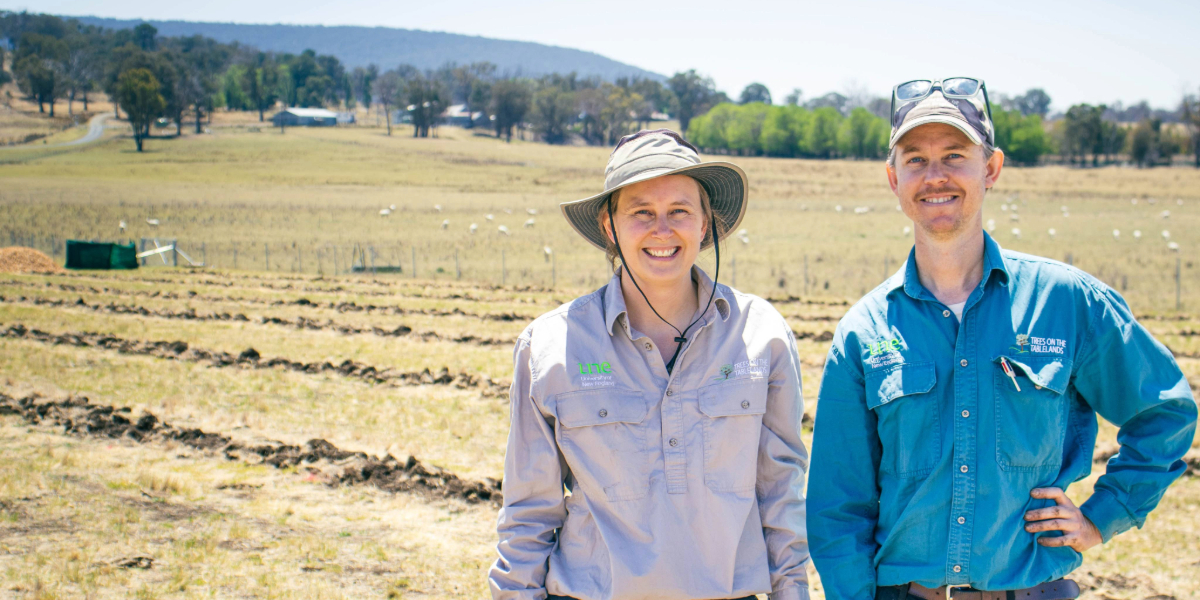Researchers from the University of New England (UNE) are helping to bolster the future of some of the Northern Tablelands’ most threatened ecological communities.
They’ve planted almost 500 native eucalypt seedlings at two sites on the UNE SMART Farms to be used to produce seeds for revegetation in decades to come, otherwise known as a ‘seed orchard’.
“We all know the climate is changing, and the diversity of genetic variation that we need in the future might not be the same as what we need today,” says Associate Professor Rose Andrew from UNE’s Botany department.
“Our goal in producing the seed orchards is to bring a range of populations together so that we’ll hopefully have really nice diverse seeds to plant in the future.”
The orchards are predominately made up of Eucalyptus viminalis (ribbon gum) and E. dalrympleana (mountain gum), which are white-barked gums (‘white gums’) that occur across the Northern Tablelands, and elsewhere in parts of southern Australia.
Mature ribbon gum woodlands provide critical habitat for a range of small mammals, such as the yellow-bellied glider and koala.
“These woodlands are also a valuable food source, producing an abundance of nectar-rich flowers for birds and insects,” says A/Prof Andrew. “They are also an important food source for koalas.
“Unfortunately, there are relatively few natural remnants of these woodland communities left, which is why these seed orchards are so critical.”
Since 2018, the project team have collected a diverse range of seeds from across the Northern Tablelands from representative populations of white gums.
Once they had established a large enough inventory, the seeds were grown out in the nurseries on campus at UNE until they were ready for planting.
To avoid creating monocultures in the seed orchards, native herbs, shrubs and forbs have been planted throughout.
“We’ve planted an assortment of different shrubs & herbs that also occur within our focal TEC’s, like Dianella, Lomandra, Acacia, and Hakea,” says Project Officer, Michael Hewins.
“It’s really important that we’re also putting these species back into the landscape as companions to our trees.”
The seed orchard is part of the larger Trees on the Tablelands project, which focuses on developing cost-effective ways to increase natural regeneration of threatened ecological communities across the Northern Tablelands.
“Until now, the most effective ways to restore woodland in this area have been to destock to reduce grazing pressure, control invasive exotic weeds with herbicides, rip the soil mechanically, and plant tubestock,” says A/Prof Andrew, who is leading the project.
“However, these techniques are expensive when done on a large scale, and their uptake hasn’t been large enough to restore the threatened ecological communities.
“So, through the Trees on the Tablelands Project, we’re developing alternative solutions that will be easier for people to adopt, hopefully leading to better outcomes for our native species.”
The project has several components, including predicting how populations will grow and change over the next century, and understanding the consequences of various agricultural and management practices on the population growth rates of four threatened species across the Northern Tablelands.
With the two seed orchards now planted, A/Prof Andrew is excited to eventually see the regeneration of some of the region’s most heavily impacted species.
“In around 20 years’ time, we will be able to harvest more seeds to revegetate the area and create more ecological communities.”
Trees on the Tablelands is a collaboration between UNE and the Northern Tablelands Local Land Services, with funding from the Environmental Trust and the NSW Government’s Saving Our Species Program. You can read more about the project here.
Something going on in your part of the region you think people should know about? Send us a news tip or email newsdesk@netimes.com.au.

